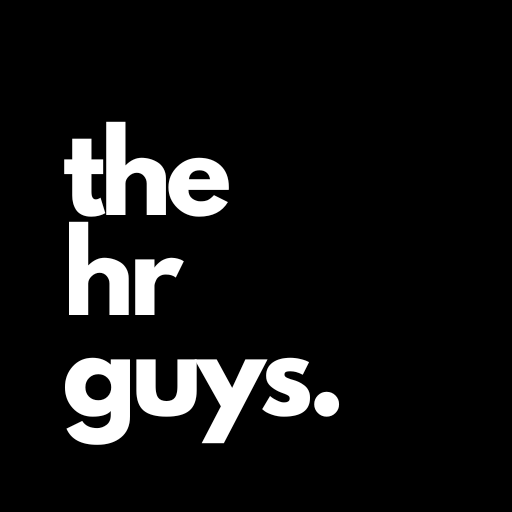Cultivating a Healthier Workforce: HR’s Role in Tackling Burnout
Ah, burnout. The silent assassin of productivity and morale. If you’ve spent any time in HR, you know it’s as real as the rain in the fens. According to a recent study by Deloitte, nearly 76% of UK employees have experienced burnout at their current job. Yes, you read that right. So, what’s burnout? It’s that special blend of emotional exhaustion, detachment, and feeling like your achievements are as significant as a chocolate teapot.
Addressing burnout is crucial, not just for the well-being of our colleagues but also for the survival of the organisation. Today, we’ll explore how HR can play the role of both detective and firefighter in this ongoing saga.
Understanding Burnout
What is Burnout?
The World Health Organisation (WHO), defines burnout as a syndrome resulting from chronic workplace stress that hasn’t been managed properly.
Causes of Burnout
Burnout can be caused by:
– Workload and Time Pressure: Ever felt like you’re drowning in deadlines? You’re not alone.
– Lack of Control and Support: It’s like trying to steer a ship without a rudder.
– Role Ambiguity and Conflict: When your job description is as clear as mud.
– Poor Workplace Culture and Environment: Toxic workplaces can suck the life out of the cheeriest of souls.
Impact of Burnout
The effects of burnout are significant and detrimental to both employees and organisations:
– On Employees: Mental health takes a nosedive, physical health follows suit, and job satisfaction becomes a distant memory.
– On Organisations: Productivity drops, turnover skyrockets, and the financial costs can be eye-watering.
HR’s Role in Recognising Burnout
Identifying Early Warning Signs
HR folks, this is where we shine. Spotting burnout early is like finding a fiver in your old jeans – immensely satisfying.
– Observing Changes in Behaviour and Performance: If Bob from accounting is suddenly as enthusiastic as a wet weekend in Brighton, something’s up.
– Regular Check-ins and Feedback Sessions: Frequent one-on-ones can reveal a lot.
– Using Employee Surveys and Assessments: Anonymous surveys can be a goldmine for uncovering stress levels.
Training Managers to Recognise Burnout
Managers are our front-line warriors against burnout. Equip them well.
– Providing Training Programs: Teach them to spot the signs of burnout.
– Encouraging Open Communication and Empathy: Promote a culture where managers actually listen.
– Developing a Supportive Leadership Style: Encourage leaders to lead with empathy and support.
Preventing Burnout
Promoting Work-Life Balance
Work-life balance isn’t just a buzzword; it’s a necessity.
– Encouraging Regular Breaks and Vacations: Make sure people actually take their holidays. All work and no play make Jack a dull boy.
– Implementing Flexible Working Hours and Remote Work Options: Flexibility can work wonders.
– Promoting the Use of Time Management Tools and Techniques: Help employees manage their workload effectively.
Enhancing Employee Support Systems
Support systems are like the safety net beneath a tightrope walker.
– Providing Access to Mental Health Resources: Counselling services and Employee Assistance Programmes (EAPs) are crucial.
– Creating Peer Support Groups and Mentorship Programmes: A supportive community can make a huge difference.
– Encouraging Professional Development and Growth Opportunities: Keep the career ladder steady.
Fostering a Positive Workplace Culture
A positive culture can be the antidote to burnout.
– Building a Culture of Recognition and Appreciation: Acknowledging hard work can go a long way.
– Promoting Teamwork and Collaboration: Encourage a sense of community.
– Ensuring Transparency and Open Communication: Keep employees in the loop.
Addressing Burnout When It Occurs
Providing Immediate Support
When burnout occurs, swift action is needed.
– Offering Flexible Working Arrangements: Adjust schedules to help alleviate stress.
– Providing Temporary Workload Adjustments: Lighten the load when necessary.
– Ensuring Access to Mental Health Resources: Connect employees with the support they need.
Long-term Strategies for Recovery
Long-term recovery needs a thoughtful approach.
– Developing Personalised Action Plans: Tailor support to individual needs.
– Regular Follow-ups and Support Sessions: Keep the support coming.
– Encouraging a Gradual Return to Full Responsibilities: Ease employees back into their roles.
Creating Sustainable Change
Implementing Organisational Changes
Long-term change requires a strategic approach.
– Redesigning Jobs to Reduce Stressors: Make roles more manageable.
– Improving Management Practices and Policies: Create policies that support well-being.
– Investing in Employee Well-being Programmes: Allocate resources to health and wellness initiatives.
Measuring and Monitoring Progress
Continuous improvement is key.
– Setting Clear Goals and Metrics: Define what success looks like.
– Regularly Reviewing and Adjusting Strategies: Be flexible and adapt as needed.
– Collecting and Analysing Feedback from Employees: Use employee input to guide improvements.
Conclusion
Recognising and addressing burnout isn’t just a nice-to-have; it’s a necessity for a thriving workplace. HR professionals and senior management must be proactive in spotting early signs, implementing preventive measures, and providing support when needed. By fostering a supportive and positive workplace culture, we can reduce burnout and enhance overall employee well-being and organisational success. Let’s take action now and cultivate a healthier workforce.
Additional Resources
– Links: WHO Definition of Burnout , Mind UK
– Contacts: Mind Infoline: 0300 123 3393
By following these guidelines, HR professionals can play a pivotal role in tackling burnout and fostering a healthier, more resilient workforce. Cheers to a brighter, burnout-free future!
Thank you for visiting our HR Recruitment blog!
Join us on LinkedIn
Follow us on Instagram
Check out the video below for more about this topic

